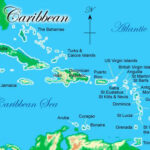In today’s interconnected digital world, understanding the geographical origins of web traffic can be invaluable. Whether you’re running an e-commerce platform aiming to tailor user experiences by pre-populating country codes or personalize language settings, or if you’re a cybersecurity professional tracking down the source of malicious activities, knowing the approximate location of an IP address is a crucial skill. While pinpointing the exact location of a device using just its IP address remains largely elusive, there are several effective methods and tools available to help you identify its approximate geographical location.
Methods to Determine the Location of an IP Address
Several techniques can be employed to trace the geographical location associated with an IP address. These methods range from querying authoritative databases to utilizing network diagnostic tools. Here are some of the most common and effective approaches:
Leveraging ARIN Whois Database
For IP resources registered within the American Registry for Internet Numbers (ARIN) region, the ARIN Whois database is a powerful resource. This database serves as a public repository of registration information, allowing users to look up details related to IP addresses, including contact information and registration specifics. By querying the ARIN Whois database, you can often identify the Internet Service Provider (ISP) responsible for assigning the IP address and the country of origin. In some instances, you may even glean information about the city or region associated with the IP address.
Utilizing Third-Party IP Lookup Websites
Numerous third-party websites offer IP lookup services, providing a user-friendly interface to access geolocation data. Platforms like Geobytes and Dnsstuff are popular choices, allowing you to simply enter an IP address and retrieve location-based information. These services often aggregate data from various sources to provide an estimated location, typically including the country, region, and city. While the accuracy can vary, these tools offer a quick and convenient way to gain insights into the general location of an IP address.
Employing Reverse DNS Lookup
The Domain Name System (DNS) not only translates domain names into IP addresses but also performs the reverse operation, known as reverse DNS lookup. By performing a reverse DNS lookup, you can attempt to find the hostname associated with a specific IP address. Hostnames can sometimes provide clues about the geographical location, particularly when ISPs, corporations, or academic institutions incorporate location identifiers into their naming conventions. For example, a hostname might include city or regional abbreviations. However, it’s important to note that reverse DNS lookups are not always reliable, as they depend on the proper configuration of the ISP’s DNS servers, and location-based hostnames are not universally adopted. You can easily perform a reverse DNS lookup using online tools.
Tracing the Path with Traceroute
The traceroute command is a network diagnostic tool that can reveal the path that network packets take to reach a destination IP address. By executing a traceroute, you can identify the series of routers that packets traverse, and these router names can sometimes offer geographical hints. Examining the hostnames of the routers along the path might reveal location-specific names, providing indirect clues about the IP address’s geographical journey and potential origin. While not a direct geolocation method, traceroute can supplement other techniques by offering contextual geographical information.
Understanding the Limitations of IP Address Geolocation
It’s crucial to acknowledge that IP address geolocation is inherently an approximation. The methods described above provide estimations of location, but they are not foolproof and can be inaccurate for several reasons:
- Dynamic IPs: Many internet users are assigned dynamic IP addresses by their ISPs, meaning the IP address can change periodically. Geolocation databases might not always be updated in real-time to reflect these changes, leading to inaccuracies.
- VPNs and Proxies: Users employing Virtual Private Networks (VPNs) or proxy servers mask their actual IP address, routing their internet traffic through intermediary servers in different locations. IP lookup tools will then identify the location of the VPN server or proxy, not the user’s actual location.
- Mobile IPs: Mobile IP addresses, used by smartphones and cellular devices, can be particularly challenging to geolocate accurately due to their dynamic nature and mobility.
- Database Accuracy: The accuracy of IP geolocation heavily relies on the databases used by lookup services. These databases are compiled from various sources and are not always perfectly accurate or up-to-date.
Conclusion
While determining the precise geographical location of an IP address is technically challenging, the methods and tools outlined above offer valuable capabilities for approximating location. By utilizing ARIN Whois, third-party IP lookup websites, reverse DNS lookups, and traceroute, you can gain meaningful insights into the potential geographical origins of an IP address. Remember to consider the inherent limitations of IP geolocation and interpret the results as estimations rather than definitive locations. For applications requiring precise location data, alternative methods like GPS or user-provided location services are necessary.


